Mechatronics Research Lab Publications
List still being populated due to webpage maintenance
2020
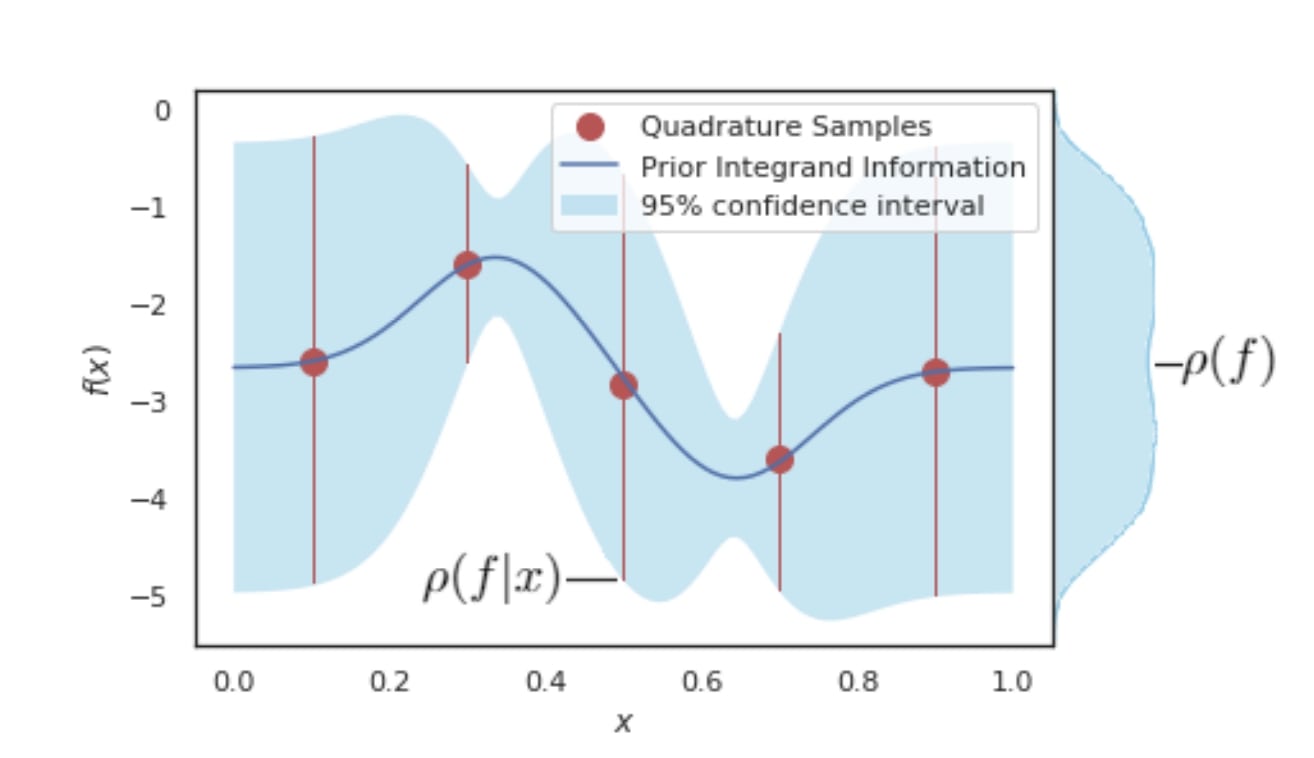
Kevin Vanslette; Abdullatif Al Alsheikh; Kamal Youcef-Toumi
Why simple quadrature is just as good as Monte Carlo Journal Article
In: Monte Carlo Methods and Applications, vol. 26, no. 1, pp. 1–16, 2020, ISSN: 1569-3961.
Abstract | Links | BibTeX | Tags: Computational Intelligence, Control Theory, Experimentation, intelligent systems, Modeling; sizing and control for smart grids, Simulation
@article{MRL_AFM_Quadrature_Monte_Carlo,
title = {Why simple quadrature is just as good as Monte Carlo},
author = {Kevin Vanslette and Abdullatif Al Alsheikh and Kamal Youcef-Toumi},
url = {http://dx.doi.org/10.1515/mcma-2020-2055},
doi = {10.1515/mcma-2020-2055},
issn = {1569-3961},
year = {2020},
date = {2020-03-01},
journal = {Monte Carlo Methods and Applications},
volume = {26},
number = {1},
pages = {1–16},
publisher = {Walter de Gruyter GmbH},
abstract = {We motive and calculate Newton–Cotes quadrature integration variance and compare it directly with Monte Carlo (MC) integration variance. We find an equivalence between deterministic quadrature sampling and random MC sampling by noting that MC random sampling is statistically indistinguishable from a method that uses deterministic sampling on a randomly shuffled (permuted) function. We use this statistical equivalence to regularize the form of permissible Bayesian quadrature integration priors such that they are guaranteed to be objectively comparable with MC. This leads to the proof that simple quadrature methods have expected variances that are less than or equal to their corresponding theoretical MC integration variances. Separately, using Bayesian probability theory, we find that the theoretical standard deviations of the unbiased errors of simple Newton–Cotes composite quadrature integrations improve over their worst case errors by an extra dimension independent factor ∝ N−1/2 This dimension independent factor is validated in our simulations.},
keywords = {Computational Intelligence, Control Theory, Experimentation, intelligent systems, Modeling; sizing and control for smart grids, Simulation},
pubstate = {published},
tppubtype = {article}
}
2019

Juan Heredia; Jonathan Tirado; Vladislav Panov; Miguel Altamirano Cabrera; Kamal Youcef-Toumi; Dzmitry Tsetserukou
RecyGlide: A Forearm-Worn Multi-Modal Haptic Display Aimed to Improve User VR Immersion Submission Proceedings Article
In: 25th ACM Symposium on Virtual Reality Software and Technology, pp. 1-2, Association for Computing Machinery, 2019, ISBN: 9781450370011.
Abstract | Links | BibTeX | Tags: Computational Intelligence, Control Theory, Data-driven learning for intelligent machine maintenance, Experimentation, intelligent systems, Mechatronic Design, Simulation, Visualization
@inproceedings{MRL_AFM_VR_Multi_Modal_Display,
title = {RecyGlide: A Forearm-Worn Multi-Modal Haptic Display Aimed to Improve User VR Immersion Submission},
author = {Juan Heredia and Jonathan Tirado and Vladislav Panov and Miguel Altamirano Cabrera and Kamal Youcef-Toumi and Dzmitry Tsetserukou},
url = {https://doi.org/10.1145/3359996.3364759},
doi = {10.1145/3359996.3364759},
isbn = {9781450370011},
year = {2019},
date = {2019-11-01},
booktitle = {25th ACM Symposium on Virtual Reality Software and Technology},
pages = {1-2},
publisher = {Association for Computing Machinery},
abstract = {Haptic devices have been employed to immerse users in VR environments. In particular, hand and finger haptic devices have been deeply developed. However, this type of devices occludes hand detection for some tracking systems, or, for some other tracking systems, it is uncomfortable for the users to wear two different devices (haptic and tracking device) on both hands. We introduce RecyGlide, a novel wearable multimodal display located at the forearm. The RecyGlide is composed of inverted five-bar linkages with 2 degrees of freedom (DoF) and vibration motors (see Fig. 1.(a). The device provides multimodal tactile feedback such as slippage, force vector, pressure, and vibration. We tested the discrimination ability of monomodal and multimodal stimuli patterns on the forearm and confirmed that the multimodal patterns have higher recognition rate. This haptic device was used in VR applications, and we proved that it enhances VR experience and makes it more interactive.},
keywords = {Computational Intelligence, Control Theory, Data-driven learning for intelligent machine maintenance, Experimentation, intelligent systems, Mechatronic Design, Simulation, Visualization},
pubstate = {published},
tppubtype = {inproceedings}
}
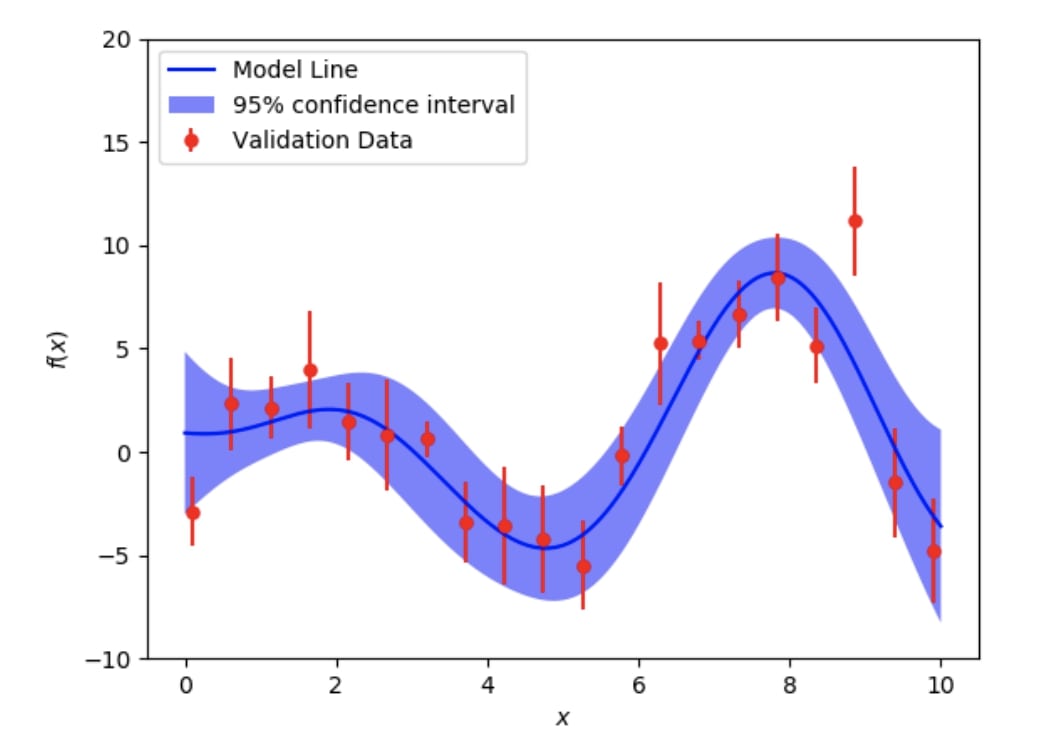
Kevin Vanslette; Tony Tohme; Kamal Youcef-Toumi
A general model validation and testing tool Journal Article
In: Reliability Engineering & System Safety, vol. 195, pp. 106684, 2019, ISSN: 0951-8320.
Abstract | Links | BibTeX | Tags: Algorithms, Computational Intelligence, Control Theory, Experimentation, intelligent systems, Probabilistic neural networks for robust machine learning, Simulation
@article{MRL_Model_Validation_Testing,
title = {A general model validation and testing tool},
author = {Kevin Vanslette and Tony Tohme and Kamal Youcef-Toumi},
url = {https://www.sciencedirect.com/science/article/pii/S0951832019302571},
doi = {https://doi.org/10.1016/j.ress.2019.106684},
issn = {0951-8320},
year = {2019},
date = {2019-10-28},
journal = {Reliability Engineering & System Safety},
volume = {195},
pages = {106684},
publisher = {Elsevier BV},
abstract = {We construct and propose the “Bayesian Validation Metric” (BVM) as a general model validation and testing tool. We find the BVM to be capable of representing all of the standard validation metrics (square error, reliability, probability of agreement, frequentist, area, probability density comparison, statistical hypothesis testing, and Bayesian model testing) as special cases and find that it can be used to improve, generalize, or further quantify their uncertainties. Thus, the BVM allows us to assess the similarities and differences between existing validation metrics in a new light. The BVM has the capacity to allow users to invent and select models according to novel validation requirements. We formulate and test a few novel compound validation metrics that improve upon other validation metrics in the literature. Further, we construct the BVM Ratio for the purpose of quantifying model selection under user defined definitions of agreement in the presence or absence of uncertainty. This construction generalizes the Bayesian model testing framework.},
keywords = {Algorithms, Computational Intelligence, Control Theory, Experimentation, intelligent systems, Probabilistic neural networks for robust machine learning, Simulation},
pubstate = {published},
tppubtype = {article}
}
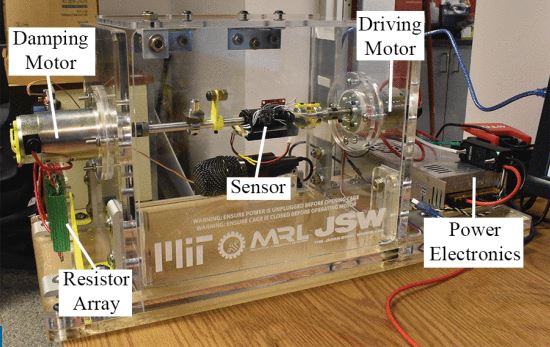
Erik Gest; Mikio Furokawa; Takayuki Hirano; Kamal Youcef-Toumi
Design of Versatile and Low-Cost Shaft Sensor for Health Monitoring Proceedings Article
In: pp. 1926-1932, IEEE IEEE, 2019, ISBN: 978-1-5386-6027-0.
Abstract | Links | BibTeX | Tags: Control Theory, Data-driven learning for intelligent machine maintenance, Experimentation, Fabrication, Instrumentation, intelligent systems, Physical System Modeling, Simulation
@inproceedings{MRL_AFM_Shaft_Sensor_Health_Monitoring,
title = {Design of Versatile and Low-Cost Shaft Sensor for Health Monitoring},
author = {Erik Gest and Mikio Furokawa and Takayuki Hirano and Kamal Youcef-Toumi},
url = {https://ieeexplore.ieee.org/document/8794408},
doi = {10.1109/ICRA.2019.8794408},
isbn = {978-1-5386-6027-0},
year = {2019},
date = {2019-08-12},
pages = {1926-1932},
publisher = {IEEE},
organization = {IEEE},
abstract = {Virtually every mechanized form of transportation, power generation system, industrial equipment, and robotic system has rotating shafts. As the shaft is often the main means of mechanical power transmission, measuring the torque, speed, vibration, and bending of the shaft can be used in many cases to access device performance and health and to implement controls. This paper proposes a shaft sensor that measures all of these phenomena with reasonable accuracy while having a low cost and simple installation process. This sensor transfers strain from the shaft and amplifies it to increase sensitivity. Furthermore, this sensor requires no components to be in the stationary reference frame, allowing the entire device to rotate with the shaft. A prototype is presented. Experimental results illustrate the effectiveness of the proposed system.},
keywords = {Control Theory, Data-driven learning for intelligent machine maintenance, Experimentation, Fabrication, Instrumentation, intelligent systems, Physical System Modeling, Simulation},
pubstate = {published},
tppubtype = {inproceedings}
}
2018
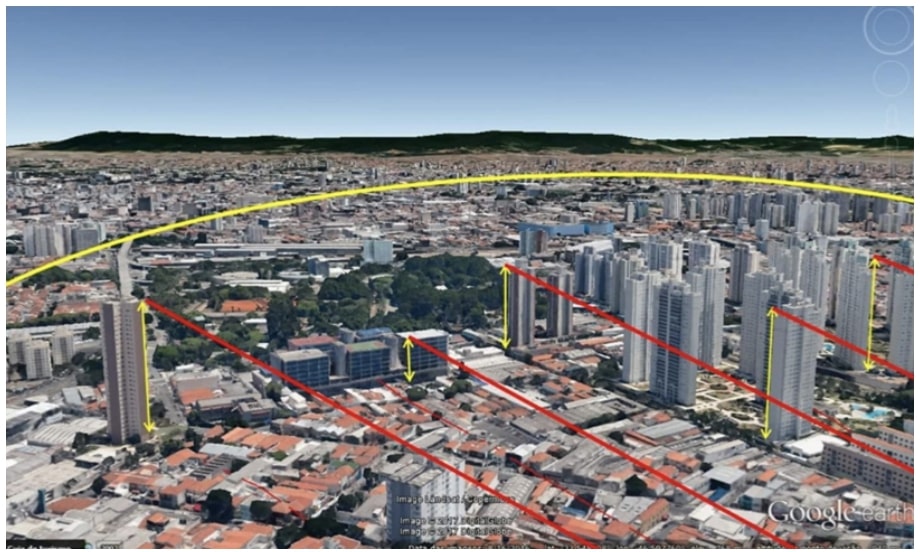
Lina Altoaimy; Arwa Alromih; Shiroq Al-Megren; Ghada Al-Hudhud; Heba Kurdi; Kamal Youcef-Toumi
Context-Aware Gossip-Based Protocol for Internet of Things Applications Journal Article
In: Sensors, vol. 18, no. 7, 2018, ISSN: 1424-8220.
Abstract | Links | BibTeX | Tags: Algorithms, Computational Intelligence, Data-driven learning for intelligent machine maintenance, intelligent systems
@article{MRL_AFM_Gossip_Protocal_Internet_App,
title = {Context-Aware Gossip-Based Protocol for Internet of Things Applications},
author = {Lina Altoaimy and Arwa Alromih and Shiroq Al-Megren and Ghada Al-Hudhud and Heba Kurdi and Kamal Youcef-Toumi},
url = {https://www.mdpi.com/1424-8220/18/7/2233},
doi = {10.3390/s18072233},
issn = {1424-8220},
year = {2018},
date = {2018-07-11},
journal = {Sensors},
volume = {18},
number = {7},
publisher = {MDPI},
abstract = {This paper proposes a gossip-based protocol that utilises a multi-factor weighting function (MFWF) that takes several parameters into account: residual energy, Chebyshev distances to neighbouring nodes and the sink node, node density, and message priority. The effects of these parameters were examined to guide the customization of the weight function to effectively disseminate data to three types of IoT applications: critical, bandwidth-intensive, and energy-efficient applications. The performances of the three resulting MFWFs were assessed in comparison with the performances of the traditional gossiping protocol and the Fair Efficient Location-based Gossiping (FELGossiping) protocol in terms of end-to-end delay, network lifetime, rebroadcast nodes, and saved rebroadcasts. The experimental results demonstrated the proposed protocol’s ability to achieve a much shorter delay for critical IoT applications. For bandwidth-intensive IoT application, the proposed protocol was able to achieve a smaller percentage of rebroadcast nodes and an increased percentage of saved rebroadcasts, i.e., better bandwidth utilisation. The adapted MFWF for energy-efficient IoT application was able to improve the network lifetime compared to that of gossiping and FELGossiping. These results demonstrate the high level of flexibility of the proposed protocol with respect to network context and message priority.},
keywords = {Algorithms, Computational Intelligence, Data-driven learning for intelligent machine maintenance, intelligent systems},
pubstate = {published},
tppubtype = {article}
}
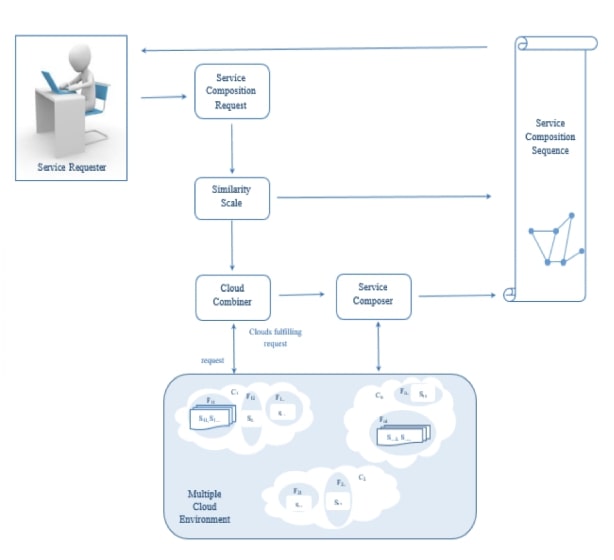
H Kurdi; F Ezzat; L Altoaimy; S H Ahmed; K Youcef-Toumi
MultiCuckoo: Multi-Cloud Service Composition Using a Cuckoo-Inspired Algorithm for the Internet of Things Applications Journal Article
In: IEEE Access, vol. 6, pp. 56737-56749, 2018, ISSN: 2169-3536.
Abstract | Links | BibTeX | Tags: Algorithms, Computational Intelligence, Data-driven learning for intelligent machine maintenance, intelligent systems, Mechatronic Design, Simulation
@article{MRL_AFM_MultiCuckoo,
title = {MultiCuckoo: Multi-Cloud Service Composition Using a Cuckoo-Inspired Algorithm for the Internet of Things Applications},
author = {H Kurdi and F Ezzat and L Altoaimy and S H Ahmed and K Youcef-Toumi},
url = {https://ieeexplore.ieee.org/document/8476294?denied=},
doi = {10.1109/ACCESS.2018.2872744},
issn = {2169-3536},
year = {2018},
date = {2018-01-01},
journal = {IEEE Access},
volume = {6},
pages = {56737-56749},
publisher = {IEEE},
abstract = {Internet of things (IoT) applications aim to provide access to widespread interconnected networks of smart devices, services, and information. This can be achieved by integrating IoT and cloud computing (CC). By using cloud computing service composition (SC), multiple services from various providers can be combined to meet users' requirements. However, SC is known for its complexity and is classified as an NP-hard problem; such problems are usually approached using heuristics, such as bioinspired algorithms. This paper aims at developing a bio-inspired algorithm that mimics the behavior of cuckoo birds (which examine the nests of other birds to find eggs similar to their own) to find a composite service that fulfills a user's request in a multi-cloud environment (MCE). Previous work on cuckoo-inspired algorithms has generally utilized metaheuristics, which try to fit a “good”solution to a general optimization problem. In contrast, we propose a problem-dependent heuristic that considers the SC problem and its particularities in MCE. The proposed algorithm, MultiCuckoo, was thoroughly evaluated based on a well-controlled experimental framework that benchmarks the performance of the new algorithm to other outstanding SC algorithms, including the all clouds combination algorithm, base cloud combination algorithm, and combinatorial optimization algorithm for multiple cloud service Composition. The results show that our algorithm is more efficient in terms of decreasing the number of examined services, the composed clouds, and the running time in comparison to the benchmark algorithms.},
keywords = {Algorithms, Computational Intelligence, Data-driven learning for intelligent machine maintenance, intelligent systems, Mechatronic Design, Simulation},
pubstate = {published},
tppubtype = {article}
}
2017
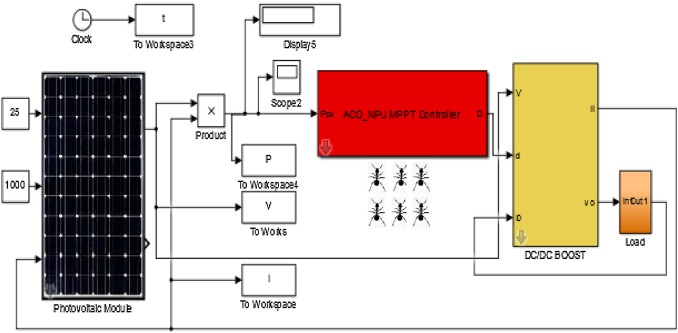
Sabrina Titri; Cherif Larbes; Kamal Youcef Toumi; Karima Benatchba
A new MPPT controller based on the Ant colony optimization algorithm for Photovoltaic systems under partial shading conditions Journal Article
In: Applied Soft Computing, vol. 58, pp. 465-479, 2017, ISSN: 1568-4946.
Abstract | Links | BibTeX | Tags: Algorithms, Computational Intelligence, intelligent systems, Mechatronic Design, Probabilistic neural networks for robust machine learning, Simulation
@article{MRL_AFM_MPPT_Controller_Ants,
title = {A new MPPT controller based on the Ant colony optimization algorithm for Photovoltaic systems under partial shading conditions},
author = {Sabrina Titri and Cherif Larbes and Kamal Youcef Toumi and Karima Benatchba},
url = {https://www.sciencedirect.com/science/article/pii/S1568494617302703},
doi = {https://doi.org/10.1016/j.asoc.2017.05.017},
issn = {1568-4946},
year = {2017},
date = {2017-09-01},
journal = {Applied Soft Computing},
volume = {58},
pages = {465-479},
abstract = {The Maximum Power Point Tracking controller (MPPT) is a key element in Photovoltaic systems (PV). It is used to maintain the PV operating point at its maximum under different temperatures and sunlight irradiations. The goal of a MPPT controller is to satisfy the following performances criteria: accuracy, precision, speed, robustness and handling the partial shading problem when climatic changes variations occur. To achieve this goal, several techniques have been proposed ranging from conventional methods to artificial intelligence and bio-inspired methods. Each technique has its own advantage and disadvantage. In this context, we propose in this paper, a new Bio- inspired MPPT controller based on the Ant colony Optimization algorithm with a New Pheromone Updating strategy (ACO_NPU MPPT) that saves the computation time and performs an excellent tracking capability with high accuracy, zero oscillations and high robustness. First, the different steps of the design of the proposed ACO_NPU MPPT controller are developed. Then, several tests are performed under standard conditions for the selection of the appropriate ACO_NPU parameters (number of ants, coefficients of evaporation, archive size, etc.). To evaluate the performances of the obtained ACO_NPU MPPT, in terms of its tracking speed, accuracy, stability and robustness, tests are carried out under slow and rapid variations of weather conditions (Irradiance and Temperature) and under different partial shading patterns. Moreover, to demonstrate the superiority and robustness of the proposed ACO_NPU_MPPT controller, the obtained results are analyzed and compared with others obtained from the Conventional Methods (P&O_MPPT) and the Soft Computing Methods with Artificial intelligence (ANN_MPPT, FLC_MPPT, ANFIS_MPPT, FL_GA_MPPT) and with the Bio Inspired methods (PSO) and (ACO) from the literature. The obtained results show that the proposed ACO_NPU MPPT controller gives the best performances under variables atmospheric conditions. In addition, it can easily track the global maximum power point (GMPP) under partial shading conditions.},
keywords = {Algorithms, Computational Intelligence, intelligent systems, Mechatronic Design, Probabilistic neural networks for robust machine learning, Simulation},
pubstate = {published},
tppubtype = {article}
}
2016
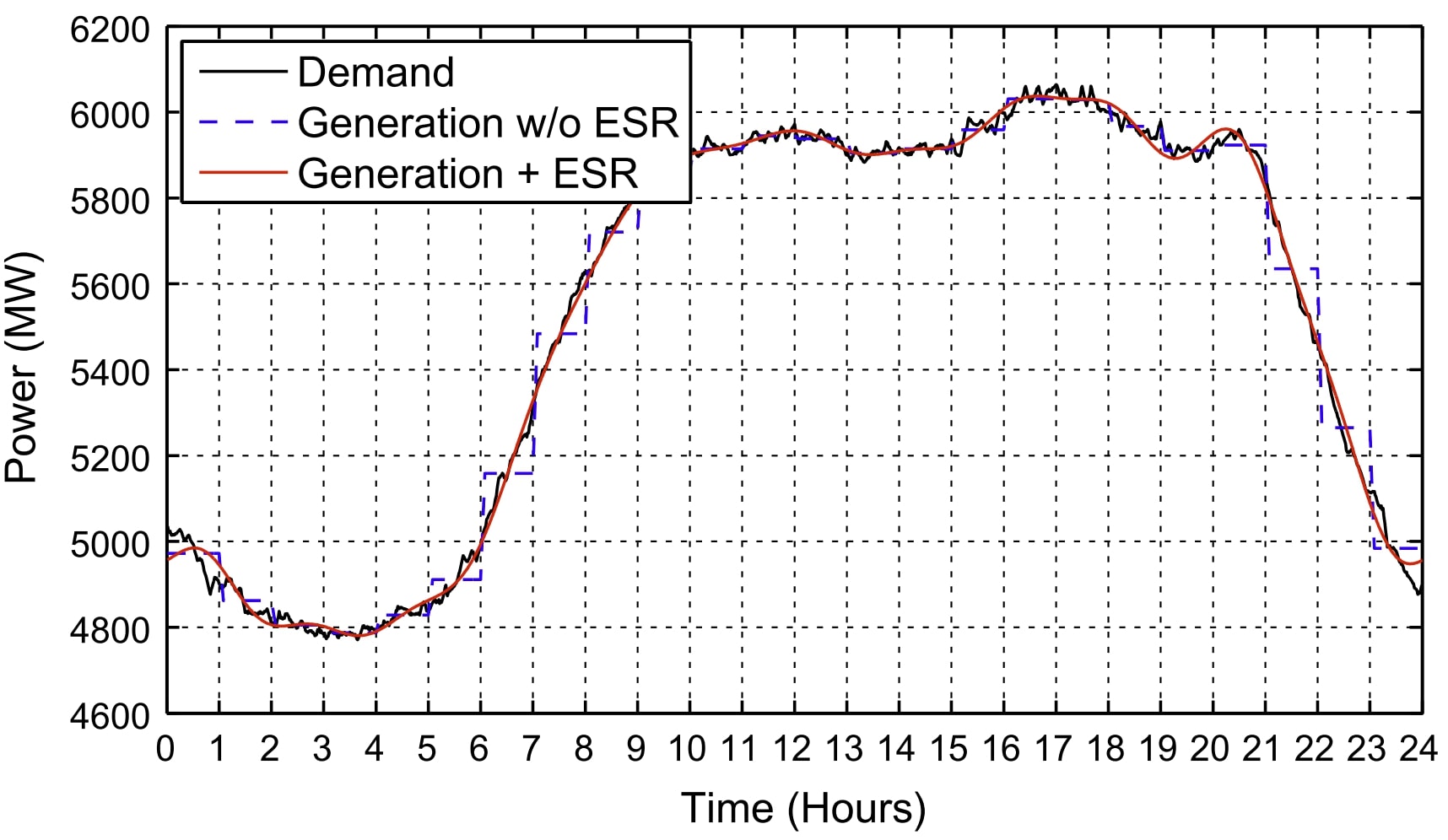
Aramazd Muzhikyan; Amro M Farid; Kamal Youcef-Toumi
Relative merits of load following reserves & energy storage market integration towards power system imbalances Journal Article
In: International Journal of Electrical Power & Energy Systems, vol. 74, pp. 222-229, 2016, ISSN: 0142-0615.
Abstract | Links | BibTeX | Tags: Control Theory, intelligent systems, Modeling; sizing and control for smart grids, Visualization
@article{MRL_Market_Integration_Power_System,
title = {Relative merits of load following reserves & energy storage market integration towards power system imbalances},
author = {Aramazd Muzhikyan and Amro M Farid and Kamal Youcef-Toumi},
url = {https://www.sciencedirect.com/science/article/pii/S0142061515002999},
doi = {https://doi.org/10.1016/j.ijepes.2015.07.013},
issn = {0142-0615},
year = {2016},
date = {2016-01-01},
journal = {International Journal of Electrical Power & Energy Systems},
volume = {74},
pages = {222-229},
publisher = {ScienceDirect},
abstract = {Traditionally, power system balancing operations consist of three consecutive control techniques, namely security-constrained unit commitment (SCUC), security-constrained economic dispatch (SCED), and automatic generation control (AGC). Each of these have their corresponding type of operating reserves. Similarly, energy storage resources (ESRs) may be integrated as energy, load following, or regulation resources. A review of the existing literature shows that most ESR integration studies are focused on a single control function. In contrast, recent work on renewable energy integration has employed the concept of enterprise control where the multiple layers of balancing operations have been integrated into a single model. This paper now uses such an enterprise control model to demonstrate the relative merits of load following reserves and energy storage integrated into the resource scheduling and balancing action layers. The results show that load following reserves and energy storage resources mitigate imbalances in fundamentally different ways. The latter becomes an increasingly effective balancing resource for high net-load variability and small day-ahead market time step.},
keywords = {Control Theory, intelligent systems, Modeling; sizing and control for smart grids, Visualization},
pubstate = {published},
tppubtype = {article}
}
2015
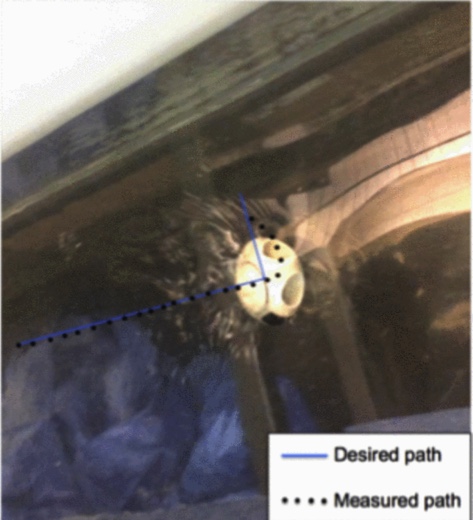
You Wu; Antoine Noel; David Donghyun Kim; Kamal Youcef-Toumi; Rached Ben-Mansour
Design of a maneuverable swimming robot for in-pipe missions Proceedings Article
In: 2015 IEEE/RSJ International Conference on Intelligent Robots and Systems (IROS), pp. 4864-4871, IEEE IEEE, 2015, ISBN: 978-1-4799-9994-1.
Abstract | Links | BibTeX | Tags: Experimentation, Inspection; repair and intelligence for water distribution pipes, intelligent systems, Physical System Modeling, Simulation, Visualization
@inproceedings{MRL_WDP_In_Pipe_Missions,
title = {Design of a maneuverable swimming robot for in-pipe missions},
author = {You Wu and Antoine Noel and David Donghyun Kim and Kamal Youcef-Toumi and Rached Ben-Mansour},
url = {https://ieeexplore.ieee.org/document/7354061},
doi = {10.1109/IROS.2015.7354061},
isbn = {978-1-4799-9994-1},
year = {2015},
date = {2015-12-17},
booktitle = {2015 IEEE/RSJ International Conference on Intelligent Robots and Systems (IROS)},
pages = {4864-4871},
publisher = {IEEE},
organization = {IEEE},
abstract = {Autonomous underwater robots provide opportunities to perform missions in confined environments such as water pipe networks. They can carry sensors in these pipes and perform tasks such as mapping and inspection. Those robots must have a high level of maneuverability in order to navigate through complex networks of pipes with irregularities due to rust and calcite deposition. We propose a fully integrated, untethered robot capable of carrying sensors and maneuver into water pipe networks. The objective of this paper is to present (i) the optimal shape design and (ii) a propulsion system selection and sizing procedure for such robots. A prototype is built to demonstrate the basic elements of maneuverability, including following straight lines and making sharp turns.},
keywords = {Experimentation, Inspection; repair and intelligence for water distribution pipes, intelligent systems, Physical System Modeling, Simulation, Visualization},
pubstate = {published},
tppubtype = {inproceedings}
}
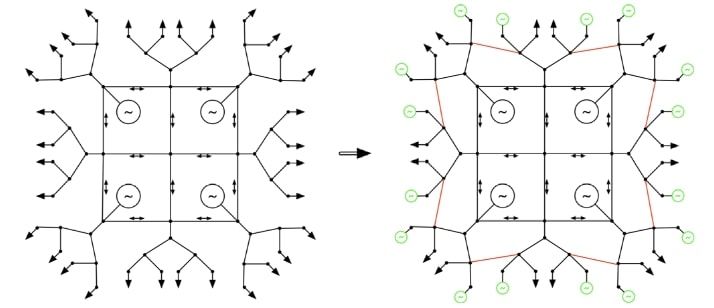
Amro M Farid; Bo Jiang; Aramazd Muzhikyan; Kamal Youcef-Toumi
The need for holistic enterprise control assessment methods for the future electricity grid Journal Article
In: Renewable and Sustainable Energy Reviews, vol. 56, pp. 669-685, 2015, ISSN: 1364-0321.
Abstract | Links | BibTeX | Tags: Algorithms, Control Theory, Experimentation, intelligent systems, Modeling; sizing and control for smart grids, Physical System Modeling, Simulation
@article{MRL_AFM_Holistic_Assessment_Electricity_Grid,
title = {The need for holistic enterprise control assessment methods for the future electricity grid},
author = {Amro M Farid and Bo Jiang and Aramazd Muzhikyan and Kamal Youcef-Toumi},
url = {https://www.sciencedirect.com/science/article/pii/S1364032115012599},
doi = {https://doi.org/10.1016/j.rser.2015.11.007},
issn = {1364-0321},
year = {2015},
date = {2015-12-17},
journal = {Renewable and Sustainable Energy Reviews},
volume = {56},
pages = {669-685},
publisher = {elsevier},
abstract = {Recently, the academic and industrial literature has coalesced around an enhanced vision of the electric power grid that is responsive, dynamic, adaptive and flexible. As driven by decarbonization, reliability, transportation electrification, consumer participation and deregulation, this future grid will undergo technical, economic and regulatory changes to bring about the incorporation of renewable energy and incentivized demand side management and control. As a result, the power grid will experience fundamental changes in its physical system structure and behavior that will consequently require enhanced and integrated control, automation, and IT-driven management functions in what is called enterprise control. While these requirements will open a plethora of opportunities for new control technologies, many of these solutions are largely overlapping in function. Their overall contribution to holistic techno-economic control objectives and their underlying dynamic properties are less than clear. Piece-meal integration and a lack of coordinated assessment could bring about costly-overbuilt solutions or even worse unintended reliability consequences. This work, thus, reviews these existing trends in the power grid evolution. It then motivates the need for holistic methods of integrated assessment that manage the diversity of control solutions against their many competing objectives and contrasts these requirements to existing variable energy resource integration studies. The work concludes with a holistic framework for “enterprise control” assessment of the future power grid and suggests directions for future work.},
keywords = {Algorithms, Control Theory, Experimentation, intelligent systems, Modeling; sizing and control for smart grids, Physical System Modeling, Simulation},
pubstate = {published},
tppubtype = {article}
}
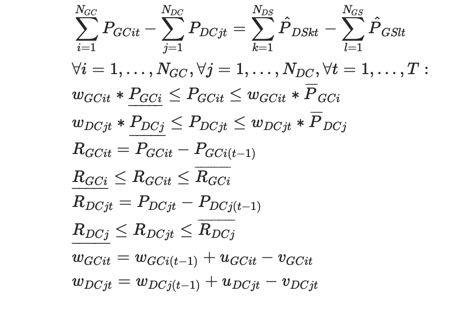
Bo Jiang; Amro M Farid; Kamal Youcef-Toumi
A comparison of day-ahead wholesale market: Social welfare vs industrial demand side management Proceedings Article
In: 2015 IEEE International Conference on Industrial Technology (ICIT), pp. 2742-2749, IEEE IEEE, 2015, ISBN: 978-1-4799-7800-7.
Abstract | Links | BibTeX | Tags: Algorithms, intelligent systems, Physical System Modeling, Simulation, Uncertainty estimation and calibration for modeling
@inproceedings{MRL_UEC_Welfare_vs_DSM,
title = {A comparison of day-ahead wholesale market: Social welfare vs industrial demand side management},
author = {Bo Jiang and Amro M Farid and Kamal Youcef-Toumi},
url = {https://ieeexplore.ieee.org/abstract/document/7125502?section=abstract},
doi = {10.1109/ICIT.2015.7125502},
isbn = {978-1-4799-7800-7},
year = {2015},
date = {2015-06-18},
booktitle = {2015 IEEE International Conference on Industrial Technology (ICIT)},
pages = {2742-2749},
publisher = {IEEE},
organization = {IEEE},
abstract = {The intermittent nature of renewable energy has been discussed in the context of the operational challenges that it brings to electrical grid reliability. In contrast, Demand Side Management (DSM) with its ability to allow customers to adjust electricity consumption in response to market signals has often been recognized as an efficient way to mitigate the variable effects of renewable energy. However, the industrial & academic literature have taken divergent approaches to DSM implementation. Academic studies often implement demand side management on the basis of a social welfare maximization. Meanwhile, industrial implementations minimize total system costs where customers are compensated for load reductions from a predefined baseline of electricity consumption that would have occurred without DSM. This paper rigorously compares these two different approaches in a day-ahead wholesale market context using the same system configuration and mathematical formalism. The comparison showed that a proper reconciliation between the dispatchable demand utility function and the load reduction cost function lead to fundamentally the same stochastic netload mitigation and the two DSM models generate the same dispatch results under specific conditions. However, while the social welfare model uses a stochastic net load composed of two terms, the industrial DSM model uses a stochastic net load composed of three terms, and is thus more prone to error and more likely requires more control activity in subsequent layers of enterprise control.},
keywords = {Algorithms, intelligent systems, Physical System Modeling, Simulation, Uncertainty estimation and calibration for modeling},
pubstate = {published},
tppubtype = {inproceedings}
}
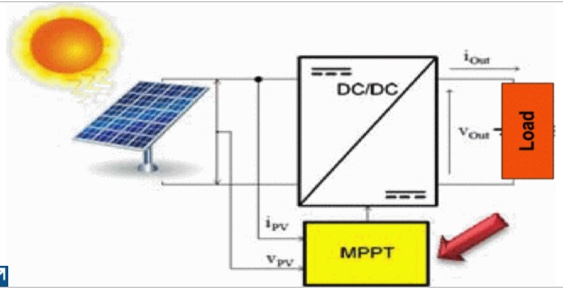
Sabrina Titri; Cherif Larbes; Kamal Youcef-Toumi
Rapid prototyping of PVS into FPGA: From model based design to FPGA/ASICs implementation Proceedings Article
In: 2014 9th International Design and Test Symposium (IDT), pp. 162-167, IEEE IEEE, 2015, ISBN: 978-1-4799-8200-4.
Abstract | Links | BibTeX | Tags: Algorithms, intelligent systems, Modeling; sizing and control for smart grids, Physical System Modeling, Simulation
@inproceedings{MRL_SG_PVS_MPPT_Optimization,
title = {Rapid prototyping of PVS into FPGA: From model based design to FPGA/ASICs implementation},
author = {Sabrina Titri and Cherif Larbes and Kamal Youcef-Toumi},
url = {https://ieeexplore.ieee.org/document/7038606},
doi = {10.1109/IDT.2014.7038606},
isbn = {978-1-4799-8200-4},
year = {2015},
date = {2015-02-15},
booktitle = {2014 9th International Design and Test Symposium (IDT)},
pages = {162-167},
publisher = {IEEE},
organization = {IEEE},
abstract = {A wide variety of maximum power point tracking (MPPT) algorithms for photovoltaic systems (PVS) have been proposed and developed. These MPPT algorithms vary in many aspects such as the selected criteria and techniques used. In this paper, we propose an effective design methodology for hardware implementation of PVS into FPGA/ASICs. To achieve our goal, we propose the application of the model based design at high level using the Matlab/Simulink which includes the HDL Coder Tool. The approach will assist the designer to develop and prototype in a relatively short time by eliminating time consuming and error prone due to manual coding. The proposed design methodology has been applied to the well know Pertub and Observe (P&O) MPPT controller. The Matlab/Simulink model of the P&O controller is optimized and converted to target, Hardware Description Language (HDL) code for FPGA/ASIC. The whole architecture of the P&O controller has been implemented on a Xilinx Spartan 3E prototyping board. We demonstrate that the generated RTL code can be easily mapped into FPGA/ASICs, which allow the rapid prototyping of PVS with more complex algorithms.},
keywords = {Algorithms, intelligent systems, Modeling; sizing and control for smart grids, Physical System Modeling, Simulation},
pubstate = {published},
tppubtype = {inproceedings}
}
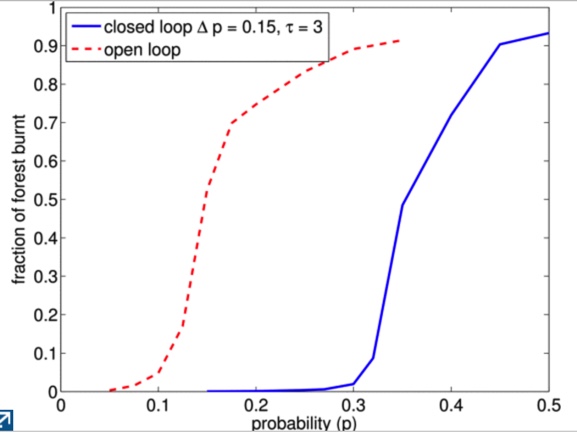
Amith Somanath; Sertac Karaman; Kamal Youcef-Toumi
Controlling stochastic growth processes on lattices: Wildfire management with robotic fire extinguishers Proceedings Article
In: 53rd IEEE Conference on Decision and Control, pp. 1432-1437, IEEE IEEE, 2015, ISBN: 978-1-4673-6090-6.
Abstract | Links | BibTeX | Tags: Algorithms, Computational Intelligence, Computer vision for autonomous vehicle sensing, intelligent systems, Physical System Modeling, Simulation
@inproceedings{MRL_AVS_Robotic_Wildfire_Control,
title = {Controlling stochastic growth processes on lattices: Wildfire management with robotic fire extinguishers},
author = {Amith Somanath and Sertac Karaman and Kamal Youcef-Toumi},
url = {https://ieeexplore.ieee.org/document/7039602},
doi = {10.1109/CDC.2014.7039602},
isbn = {978-1-4673-6090-6},
year = {2015},
date = {2015-02-15},
booktitle = {53rd IEEE Conference on Decision and Control},
pages = {1432-1437},
publisher = {IEEE},
organization = {IEEE},
abstract = {Forest fires continue to cause considerable social and economic damage. Fortunately, the emergence of new robotics technologies, including capable autonomous unmanned aerial vehicles, may help improve wildfire management in the near future. In this paper, we characterize the number of vehicles required to combat wildfires, using a percolation-theoretic analysis that originated in the mathematical physics community. We model the wildfire as a stochastic growth process on a square lattice, where the local growth probabilities depend on the presence of robotic fire-extinguishing vehicles. We develop two control policies: First treats only a fraction of burning nodes at a given time, and the second treats burning nodes only at finite time intervals. We characterize the conditions under which these policies can stabilize a wildfire, i.e., ensure the fire stops eventually almost surely. We also provide computational results which demonstrate our theoretical analysis.},
keywords = {Algorithms, Computational Intelligence, Computer vision for autonomous vehicle sensing, intelligent systems, Physical System Modeling, Simulation},
pubstate = {published},
tppubtype = {inproceedings}
}
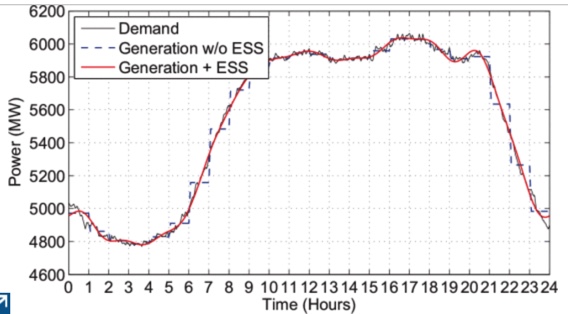
Aramazd Muzhikyan; Amro M Farid; Kamal Youcef-Toumi
A power grid enterprise control method for energy storage system integration Proceedings Article
In: IEEE PES Innovative Smart Grid Technologies, Europe, pp. 1-6, 2015, ISBN: 978-1-4799-7720-8.
Abstract | Links | BibTeX | Tags: intelligent systems, Modeling; sizing and control of smart grids, Physical System Modeling, Simulation
@inproceedings{MRL_SG_Grid_Enterprise_Control,
title = {A power grid enterprise control method for energy storage system integration},
author = {Aramazd Muzhikyan and Amro M Farid and Kamal Youcef-Toumi},
url = {https://ieeexplore.ieee.org/document/7028898},
doi = {10.1109/ISGTEurope.2014.7028898},
isbn = {978-1-4799-7720-8},
year = {2015},
date = {2015-02-02},
booktitle = {IEEE PES Innovative Smart Grid Technologies, Europe},
pages = {1-6},
abstract = {Traditionally, power system balancing operations consist of three consecutive control techniques, namely security-constrained unit commitment (SCUC), security constrained economic dispatch (SCED), and automatic generation control (AGC). Each of these have their corresponding type of operating reserves. Similarly, energy storage systems (ESS) may be integrated as energy, load following, or regulation resources. A review of the existing literature shows that most ESS integration studies are focused on a single control function. In contrast, recent work on renewable energy integration has employed the concept of enterprise control where the multiple layers of balancing operations have been integrated into a single model to capture and potentially control the interactions between timescales. This paper now uses such an enterprise control model to demonstrate the multiple timescale effects as a consequence of ESS integration into a single control action. It also proposes a novel scheduling technique which beneficially exploits this coupling in two timescales. As a result, the ESS scheduling technique shows peak-loading shaving and operating costs reductions in the SCUC and load following reserve requirements in the SCED.},
keywords = {intelligent systems, Modeling; sizing and control of smart grids, Physical System Modeling, Simulation},
pubstate = {published},
tppubtype = {inproceedings}
}
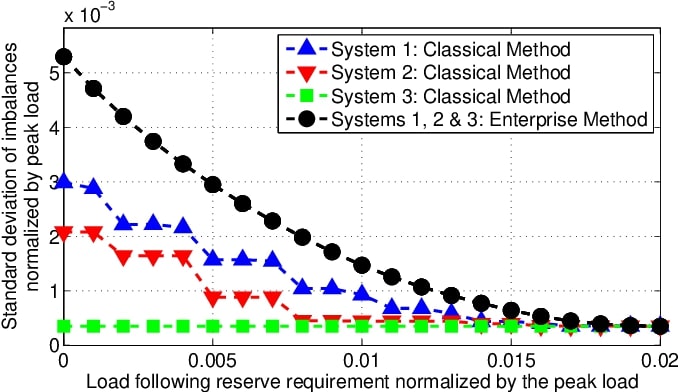
A Muzhikyan; A M Farid; K Youcef-Toumi
An Enterprise Control Assessment Method for Variable Energy Resource-Induced Power System Imbalances—Part II: Parametric Sensitivity Analysis Journal Article
In: IEEE Transactions on Industrial Electronics, vol. 62, no. 4, pp. 2459-2467, 2015, ISSN: 1557-9948.
Abstract | Links | BibTeX | Tags: Algorithms, Control Theory, intelligent systems, Modeling, Simulation, sizing and control of smart grids
@article{MRL_AFM_Enterprise_Control_Assessment,
title = {An Enterprise Control Assessment Method for Variable Energy Resource-Induced Power System Imbalances—Part II: Parametric Sensitivity Analysis},
author = {A Muzhikyan and A M Farid and K Youcef-Toumi},
url = {https://ieeexplore.ieee.org/document/7018074?denied=},
doi = {10.1109/TIE.2015.2395380},
issn = {1557-9948},
year = {2015},
date = {2015-01-22},
journal = {IEEE Transactions on Industrial Electronics},
volume = {62},
number = {4},
pages = {2459-2467},
publisher = {IEEE},
abstract = {In recent years, renewable energy has developed to address energy security and climate change drivers. However, as energy resources, they possess a variable and uncertain nature that significantly complicates grid balancing operations. As a result, an extensive academic and industrial literature has developed to determine how much such variable energy resources (VERs) may be integrated and how to best mitigate their impacts. While certainly insightful with the context of their application, many integration studies have methodological limitations because they are case specific, address a single control function of the power grid balancing operations, and are often not validated by simulation. The prequel to this paper presented a holistic method for the assessment of power grid imbalances induced by VERs based upon the concept of enterprise control. This paper now systematically studies these power grid imbalances in terms of five independent variables: 1) day-ahead market time step; 2) real-time market time step; 3) VER normalized variability; 4) normalized day-ahead VER forecast error; and 5) normalized short-term VER forecast error. The systematic study elucidates the impacts of these variables and provides significant insights as to how planners should address these independent variables in the future.},
keywords = {Algorithms, Control Theory, intelligent systems, Modeling, Simulation, sizing and control of smart grids},
pubstate = {published},
tppubtype = {article}
}
2014

David Donghyun Kim; You Wu; Antoine Noel; Kamal Youcef-Toumi
RIM Propeller for Micro Autonomous Underwater Vehicles Proceedings Article
In: ASME 2014 Dynamic Systems and Control Conference, ASME ASME, 2014, ISBN: 978-0-7918-4620-9.
Abstract | Links | BibTeX | Tags: Computer vision for autonomous vehicle sensing, Control Theory, Experimentation, Fabrication, intelligent systems, Mechatronic Design, Simulation
@inproceedings{MRL_AVS_AUV_RIM_Control,
title = {RIM Propeller for Micro Autonomous Underwater Vehicles},
author = {David Donghyun Kim and You Wu and Antoine Noel and Kamal Youcef-Toumi},
url = {https://asmedigitalcollection.asme.org/DSCC/proceedings/DSCC2014/46209/V003T44A005/229722},
doi = {10.1115/DSCC2014-6282},
isbn = {978-0-7918-4620-9},
year = {2014},
date = {2014-12-19},
booktitle = {ASME 2014 Dynamic Systems and Control Conference},
publisher = {ASME},
organization = {ASME},
abstract = {Micro autonomous underwater vehicles (AUVs) need small-scale, powerful and safe propulsion systems especially when they are performing missions in pipes and other confined environments. However, the most conventional propulsion systems do not satisfy all three requirements: small, powerful and safe. A micro propulsion system meeting those requirements are developed based on the RIM propeller concept. It is compact and powerful; the complete motor-propeller assembly is 33mm in diameter, 12mm in depth and 16g in weight, and it is capable of producing 0.4N thrust in static water given a 7.1W power input. The paper presents the design, manufacturing and integration of the micro RIM propeller in an AUV.},
keywords = {Computer vision for autonomous vehicle sensing, Control Theory, Experimentation, Fabrication, intelligent systems, Mechatronic Design, Simulation},
pubstate = {published},
tppubtype = {inproceedings}
}
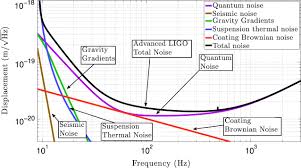
B N Shapiro; R Adhikari; J Driggers; J Kissel; B Lantz; J Rollins; K Youcef-Toumi
Noise and control decoupling of Advanced LIGO suspensions Journal Article
In: Classical and Quantum Gravity, vol. 32, no. 1, pp. 015004, 2014.
Abstract | Links | BibTeX | Tags: Control Theory, Experimentation, intelligent systems, Physical System Modeling, Simulation, Uncertainty estimation and calibration for modeling, Visualization
@article{MRL_AFM_Noise_Control_Decoupling,
title = {Noise and control decoupling of Advanced LIGO suspensions},
author = {B N Shapiro and R Adhikari and J Driggers and J Kissel and B Lantz and J Rollins and K Youcef-Toumi},
url = {https://doi.org/10.1088/0264-9381/32/1/015004},
doi = {10.1088/0264-9381/32/1/015004},
year = {2014},
date = {2014-12-10},
journal = {Classical and Quantum Gravity},
volume = {32},
number = {1},
pages = {015004},
publisher = {IOP Publishing},
abstract = {Ground-based interferometric gravitational wave observatories such as Advanced LIGO must isolate their optics from ground vibrations with suspension systems to meet their stringent noise requirements. These suspensions typically have very high quality-factor resonances that require active damping. The sensor noise associated with this damping is a potential significant contributor to the sensitivity of these interferometers. This paper introduces a novel scheme for suspension damping that isolates much of this noise and permits greater amounts of damping. It also decouples the damping feedback design from the interferometer control. The scheme works by invoking a change from a local coordinate frame associated with each suspension, to a coordinate frame aligned with the interferometric readout. In this way, degrees of freedom invisible to the readout can employ effective, but noisy damping. The degree of freedom measured by the readout is then damped using low noise interferometer signals, eliminating the need to use the usual noisy sensors. Simulated and experimental results validate the concepts presented in this paper.},
keywords = {Control Theory, Experimentation, intelligent systems, Physical System Modeling, Simulation, Uncertainty estimation and calibration for modeling, Visualization},
pubstate = {published},
tppubtype = {article}
}
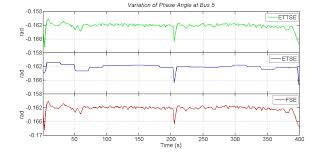
Reshma C Francy; Amro M Farid; Kamal Youcef-Toumi
Event triggered state estimation techniques for power systems with integrated variable energy resources Journal Article
In: ISA transactions, vol. 56, pp. 165—172, 2014, ISSN: 0019-0578.
Abstract | Links | BibTeX | Tags: Control Theory, Experimentation, intelligent systems, Modeling; sizing and control for smart grids, Physical System Modeling, Simulation
@article{MRL_AFM_State_Estimation_Power,
title = {Event triggered state estimation techniques for power systems with integrated variable energy resources},
author = {Reshma C Francy and Amro M Farid and Kamal Youcef-Toumi},
url = {https://doi.org/10.1016/j.isatra.2014.11.001},
doi = {10.1016/j.isatra.2014.11.001},
issn = {0019-0578},
year = {2014},
date = {2014-11-24},
journal = {ISA transactions},
volume = {56},
pages = {165—172},
abstract = {For many decades, state estimation (SE) has been a critical technology for energy management systems utilized by power system operators. Over time, it has become a mature technology that provides an accurate representation of system state under fairly stable and well understood system operation. The integration of variable energy resources (VERs) such as wind and solar generation, however, introduces new fast frequency dynamics and uncertainties into the system. Furthermore, such renewable energy is often integrated into the distribution system thus requiring real-time monitoring all the way to the periphery of the power grid topology and not just the (central) transmission system. The conventional solution is two fold: solve the SE problem (1) at a faster rate in accordance with the newly added VER dynamics and (2) for the entire power grid topology including the transmission and distribution systems. Such an approach results in exponentially growing problem sets which need to be solver at faster rates. This work seeks to address these two simultaneous requirements and builds upon two recent SE methods which incorporate event-triggering such that the state estimator is only called in the case of considerable novelty in the evolution of the system state. The first method incorporates only event-triggering while the second adds the concept of tracking. Both SE methods are demonstrated on the standard IEEE 14-bus system and the results are observed for a specific bus for two difference scenarios: (1) a spike in the wind power injection and (2) ramp events with higher variability. Relative to traditional state estimation, the numerical case studies showed that the proposed methods can result in computational time reductions of 90. These results were supported by a theoretical discussion of the computational complexity of three SE techniques. The work concludes that the proposed SE techniques demonstrate practical improvements to the computational complexity of classical state estimation. In such a way, state estimation can continue to support the necessary control actions to mitigate the imbalances resulting from the uncertainties in renewables.},
keywords = {Control Theory, Experimentation, intelligent systems, Modeling; sizing and control for smart grids, Physical System Modeling, Simulation},
pubstate = {published},
tppubtype = {article}
}
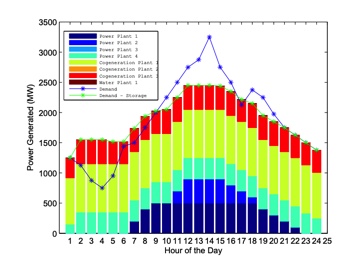
William Lubega; Apoorva Santhosh; Amro M Farid; Kamal Youcef-Toumi
An Integrated Energy and Water Market for the Supply Side of the Energy-Water Nexus in the Engineered Infrastructure Proceedings Article
In: ASME 2014 Power Conference, 2014, ISBN: 978-0-7918-4609-4.
Abstract | Links | BibTeX | Tags: Algorithms, intelligent systems, Modeling; sizing and control for smart grids, Physical System Modeling, Simulation
@inproceedings{MRL_SG_Integrated_Electric_Water,
title = {An Integrated Energy and Water Market for the Supply Side of the Energy-Water Nexus in the Engineered Infrastructure},
author = {William Lubega and Apoorva Santhosh and Amro M Farid and Kamal Youcef-Toumi},
url = {https://asmedigitalcollection.asme.org/POWER/proceedings/POWER2014/46094/V002T10A003/282270},
doi = {10.1115/POWER2014-32075},
isbn = {978-0-7918-4609-4},
year = {2014},
date = {2014-11-19},
booktitle = {ASME 2014 Power Conference},
abstract = {In regions that utilize thermal desalination as part of their water supply portfolio, the cogeneration of water and power in cogeneration desalination plants couples the supply sides of the electricity and water grids. For a fixed plant design, there is a limited range of ratios of generated electric power to produced water at any given time. Due to this coupling, electricity and water require co-optimization. In an environment in which electricity supply is determined by deregulated wholesale markets, this need for co-optimization suggests a need for integrated electricity and water markets. In this market, independent power producers, independent water producers and independent cogeneration plants would submit bids to satisfy demand over a time horizon to a clearing mechanism, indicating relevant physical constraints. The mechanism would then optimize supply of both electricity and water over the time horizon of interest. Recently, a simultaneous co-optimization method has been contributed for the economic dispatch of networks that include water, power and cogeneration facilities in such an integrated market. This paper builds upon this foundation with the introduction of the corresponding unit commitment problem.},
keywords = {Algorithms, intelligent systems, Modeling; sizing and control for smart grids, Physical System Modeling, Simulation},
pubstate = {published},
tppubtype = {inproceedings}
}
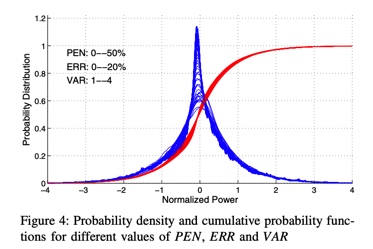
Aramazd Muzhikyan; A M Farid; Kamal Youcef-Toumi
An enhanced method for the determination of load following reserves Proceedings Article
In: 2014 American Control Conference, pp. 926-933, IEEE IEEE, 2014, ISBN: 978-1-4799-3274-0.
Abstract | Links | BibTeX | Tags: intelligent systems, Modeling; sizing and control of smart grids, Physical Systems Modeling, Simulation
@inproceedings{MRL_SG_Reserve_Quantification,
title = {An enhanced method for the determination of load following reserves},
author = {Aramazd Muzhikyan and A M Farid and Kamal Youcef-Toumi},
url = {https://ieeexplore.ieee.org/stamp/stamp.jsp?tp=&arnumber=6859254&isnumber=6858556},
doi = {10.1109/ACC.2014.6859254},
isbn = {978-1-4799-3274-0},
year = {2014},
date = {2014-07-21},
booktitle = {2014 American Control Conference},
pages = {926-933},
publisher = {IEEE},
organization = {IEEE},
abstract = {Power generation reserves play a central role for maintaining the balance of generation and consumption. Reserves, scheduled in advance, compensate for forecast error, variability and transmission losses. However, as reserves are a costly commodity, their amount should be carefully assessed to prevent unnecessary expense. Currently, the quantity of required reserves are determined based upon a posteriori methods that use operator's experience and established assumptions. This paper instead presents a method founded upon non-dimensional numbers and digitial signal processing to determine the quantity of load following reserves a priori.},
keywords = {intelligent systems, Modeling; sizing and control of smart grids, Physical Systems Modeling, Simulation},
pubstate = {published},
tppubtype = {inproceedings}
}
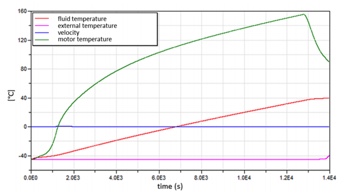
Ethan B Heller; Kamal Youcef-Toumi
Analysis and control of a thermal management system for robots in temperature-restricted environments Proceedings Article
In: 2014 American Control Conference, 2014, ISBN: 978-1-4799-3274-0.
Abstract | Links | BibTeX | Tags: Control Theory, Data-driven learning for intelligent machine maintenance, intelligent systems, Physical System Modeling, Simulation
@inproceedings{MRL_DDL_Thermal_Robot_Management,
title = {Analysis and control of a thermal management system for robots in temperature-restricted environments},
author = {Ethan B Heller and Kamal Youcef-Toumi},
url = {https://ieeexplore.ieee.org/stamp/stamp.jsp?tp=&arnumber=6858774&isnumber=6858556},
doi = {10.1109/ACC.2014.6858774},
isbn = {978-1-4799-3274-0},
year = {2014},
date = {2014-06-01},
booktitle = {2014 American Control Conference},
abstract = {Detailed simulations were performed with a model of a proposed thermal management system (TMS) that allows robots to operate within environments that are hostile to the free expulsion of waste heat. Previous simulations have shown that a closed-loop control method is necessary for the proposed TMS to maintain proper robot operation for long missions. A closed-loop control based on model-predictive methods was constructed in MATLAB around the model of the TMS so long missions are possible without violating any of the operating constraints of the robot or the environment. The closed-loop simulations results show that the control successfully maintains robot operation within the environment for a long mission.},
keywords = {Control Theory, Data-driven learning for intelligent machine maintenance, intelligent systems, Physical System Modeling, Simulation},
pubstate = {published},
tppubtype = {inproceedings}
}

Apoorva Santhosh; Amro Farid; Kamal Youcef-Toumi
Real-time economic dispatch for the supply side of the energy-water nexus Journal Article
In: Applied Energy, vol. 122, pp. 42–52, 2014.
Abstract | Links | BibTeX | Tags: Algorithms, Computational Intelligence, Control Theory, Data-driven learning for intelligent machine maintenance, intelligent systems, Simulation
@article{MRL_AFM_Economic_Energy_Water_Nexus,
title = {Real-time economic dispatch for the supply side of the energy-water nexus},
author = {Apoorva Santhosh and Amro Farid and Kamal Youcef-Toumi},
doi = {10.1016/j.apenergy.2014.01.062},
year = {2014},
date = {2014-06-01},
journal = {Applied Energy},
volume = {122},
pages = {42–52},
publisher = {researchgate},
abstract = {Clean energy and water are two essential resources that any society must securely deliver. Their usage raises sustainability issues and questions of nations’ resilience in face of global changes and mega-trends such as population growth, global climate change, and economic growth. Traditionally, the infrastructure systems that deliver these precious commodities, the water distribution and power transmission networks are thought of as separate, uncoupled systems. However, in reality, they are very much coupled in what is commonly known as the energy-water nexus. Although this subject has recently caught the attention of numerous policy and regulatory agencies, rarely is it holistically addressed in terms of an integrated engineering system for its management, planning, and regulation as an interdisciplinary concern. This work specifically fills this gap by addressing the supply side of this integrated engineering system. Specifically, it develops the multi-plant real-time simultaneous economic dispatch of power and water. While significant background literature has addressed traditional power dispatch, and the emerging co-dispatch of power and heat, as of now there does not exist a parameterized model for the optimized dispatch of power and water for multiple power, water, and coproduction facilities. The work presents such a model where production costs are minimized subject to capacity, demand and process constraints. It is demonstrated on an illustrative example of modest size. Interesting results were observed suggesting that the coproduction minimum capacity limits and process constraints can lead to scenarios where cheaper single product plants can be crowded out of the dispatch. The program provides a systematic method of achieving optimal results and can serve as a basis for set-points upon which individual plants can implement their optimal control. In so doing, it makes a supply-side contribution to the ongoing grand-challenge of improving the sustainability of the energy-water nexus.},
keywords = {Algorithms, Computational Intelligence, Control Theory, Data-driven learning for intelligent machine maintenance, intelligent systems, Simulation},
pubstate = {published},
tppubtype = {article}
}
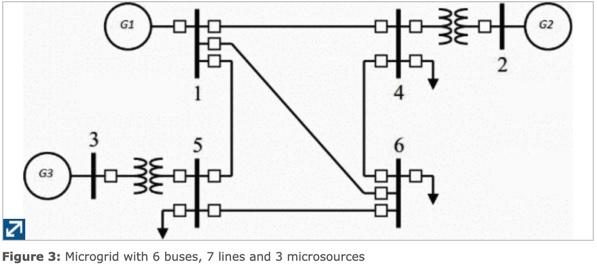
Sergio Rivera; Amro M Farid; Kamal Youcef-Toumi
A multi-agent system transient stability platform for resilient self-healing operation of multiple microgrids Proceedings Article
In: ISGT 2014, pp. 1-5, IEEE IEEE, 2014, ISBN: 978-1-4799-3653-3.
Abstract | Links | BibTeX | Tags: Computational Intelligence, intelligent systems, Modeling; Systems and Control of Smart Grids, Physical System Modeling, Simulation, Visualization
@inproceedings{MRL_SG_Multi_Agent_Micro_Grid,
title = {A multi-agent system transient stability platform for resilient self-healing operation of multiple microgrids},
author = {Sergio Rivera and Amro M Farid and Kamal Youcef-Toumi},
url = {https://ieeexplore.ieee.org/document/6816377},
doi = {10.1109/ISGT.2014.6816377},
isbn = {978-1-4799-3653-3},
year = {2014},
date = {2014-05-19},
booktitle = {ISGT 2014},
pages = {1-5},
publisher = {IEEE},
organization = {IEEE},
abstract = {This paper proposes a multi-agent transient stability platform for the study of self-operation of multiple microgrids. This platform combines a MATLAB-based time domain simulation of the grid's transient stability with a JAVA-JADE (JAVA Agent DEvelopment Framework) which supports the development of multi-agent systems that utilize distributed artificial intelligence techniques that support simultaneous, geographically-distributed, and coordinated decision-making techniques. This hybrid platform leverages the numerical strengths of MATLAB with JAVA's multi-threaded decision-making capability. To that effect, the platform was tested on two complementary test cases: one to demonstrate a dynamic reconfiguration capability and another to demonstrate the decentralized dispatch of multiple microgrids. The work presents many opportunities for future developments in the domain of resilient self-healing operation of power grids.},
keywords = {Computational Intelligence, intelligent systems, Modeling; Systems and Control of Smart Grids, Physical System Modeling, Simulation, Visualization},
pubstate = {published},
tppubtype = {inproceedings}
}
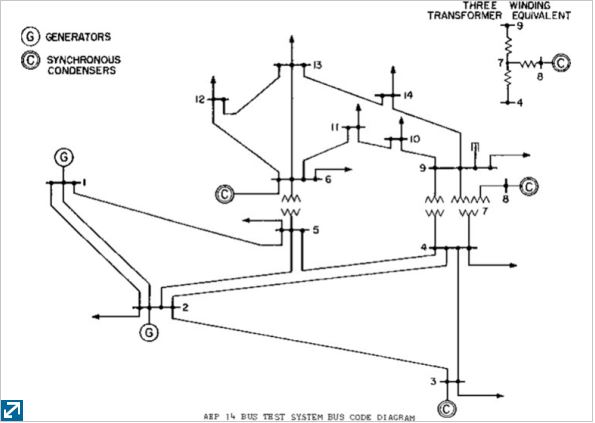
Apoorva Santhosh; Amro M Farid; Kamal Youcef-Toumi
Optimal network flow for the supply side of the energy-water nexus Proceedings Article
In: 2013 IEEE International Workshop on Inteligent Energy Systems (IWIES), pp. 155-160, IEEE IEEE, 2014, ISBN: 978-1-4799-1135-6.
Abstract | Links | BibTeX | Tags: Algorithms, intelligent systems, Modeling; sizing and control for smart grids, Physical System Modeling, Simulation
@inproceedings{MRL_SG_Water_Plant_Sustainability,
title = {Optimal network flow for the supply side of the energy-water nexus},
author = {Apoorva Santhosh and Amro M Farid and Kamal Youcef-Toumi},
url = {https://ieeexplore.ieee.org/document/6698578},
doi = {10.1109/IWIES.2013.6698578},
isbn = {978-1-4799-1135-6},
year = {2014},
date = {2014-01-06},
booktitle = {2013 IEEE International Workshop on Inteligent Energy Systems (IWIES)},
pages = {155-160},
publisher = {IEEE},
organization = {IEEE},
abstract = {Clean energy and water are two essential resources that any society must securely deliver. Their usage raises sustainability issues and questions of nations' resilience in face of global changes and mega-trends such as population growth, global climate change, and economic growth. Recently, attention has been paid to the infrastructure systems for water distribution and power transmission and the coupling between them in what is commonly known as the energy-water nexus. Although numerous policy and regulatory agencies have addressed the subject, rarely is it holistically addressed in terms of an integrated engineering system for its management, planning, and regulation as an interdisciplinary concern. This work specifically addresses the supply side of this integrated engineering system framework. It takes as its subject the real-time optimal flows in power and water networks. Significant background literature is brought to bear on this topic including the emerging co-dispatch of power and water and the more well established optimizations for power and water networks individually. The work presents a mathematical optimization program for the co-dispatch of the two commodities for three types of plants: power generation plants, co-production facilities and water production plants. Production costs are minimized subject to capacity, demand and transmission constraints and demonstrated on an illustrative example of modest size developed from standard test cases. On a practical basis, the program can be applied directly in middle eastern countries where water and power distribution are typically under the responsibility of a single utility. Furthermore, the program provides a systematic method of achieving optimal results and can serve as a basis for set-points upon which individual plants can implement their optimal control. In so doing, it makes a supply-side contribution to the ongoing grand-challenge of improving the sustainability of the energy-water nexus.},
keywords = {Algorithms, intelligent systems, Modeling; sizing and control for smart grids, Physical System Modeling, Simulation},
pubstate = {published},
tppubtype = {inproceedings}
}
2013
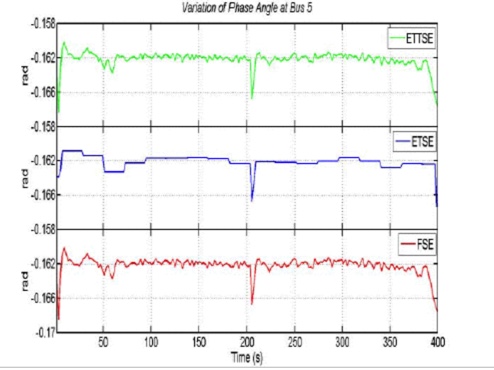
Reshma Francy; Amro M Farid; Kamal Youcef-Toumi
An event triggered tracking state estimator for power systems with integrated wind generation Proceedings Article
In: 2013 IEEE Grenoble Conference, pp. 1-6, IEEE IEEE, 2013, ISBN: 978-1-4673-5669-5.
Abstract | Links | BibTeX | Tags: intelligent systems, Modelling; sizing and control of smart grids, Physical Systems Modeling, Simulation
@inproceedings{MRL_SG_Wind_Energy_Integration,
title = {An event triggered tracking state estimator for power systems with integrated wind generation},
author = {Reshma Francy and Amro M Farid and Kamal Youcef-Toumi},
url = {https://ieeexplore.ieee.org/document/6617292},
doi = {10.1109/PTC.2013.6652180},
isbn = {978-1-4673-5669-5},
year = {2013},
date = {2013-11-04},
booktitle = {2013 IEEE Grenoble Conference},
pages = {1-6},
publisher = {IEEE},
organization = {IEEE},
abstract = {For many decades, state estimation has been a critical technology in the energy management systems utilized by transmission system operators. Over time, it has become a mature technology that provides an accurate representation of system state under fairly stable and well understood system operation. The integration of variable energy resources such as wind and solar generation, however, introduce new dynamics and uncertainties into the system. Along with increase in variability which needs real time monitoring, state estimation will be extended to the distribution networks which increase the size of the problem. Conventional solutions to this problem result in large problem sets being solved at a faster rate thereby becoming computationally intensive. This work builds upon the recent contribution of event-triggering where the state estimator is only called in the case of considerable “novelty” in the evolution of the system state. Specifically, the concept of tracking saves significant computational effort at minimal expense of error by allowing for the update of system state between two consecutive triggered instances. The new event-triggered tracking state estimator (ETTSE) is demonstrated on the standard IEEE 14-bus system, and the results are observed for a specific bus.},
keywords = {intelligent systems, Modelling; sizing and control of smart grids, Physical Systems Modeling, Simulation},
pubstate = {published},
tppubtype = {inproceedings}
}
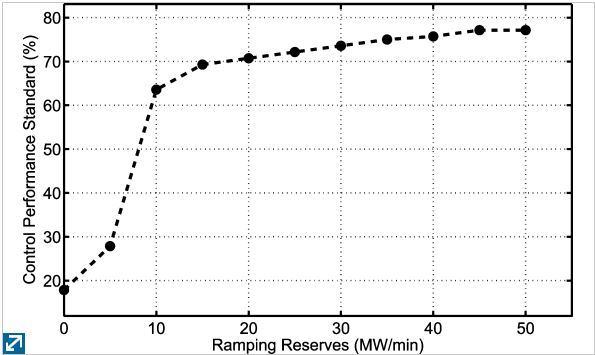
Aramazd Muzhikyan; Amro M Farid; Kamal Youcef-Toumi
Variable energy resource induced power system imbalances: Mitigation by increased system flexibility, spinning reserves and regulation Proceedings Article
In: 2013 1st IEEE Conference on Technologies for Sustainability (SusTech), pp. 15-22, IEEE IEEE, 2013, ISBN: 978-1-4673-4630-6.
Abstract | Links | BibTeX | Tags: Algorithms, intelligent systems, Modeling; sizing and control for smart grids, Physical System Modeling, Simulation
@inproceedings{MRL_SG_Generalized_Reserve_Analysis,
title = {Variable energy resource induced power system imbalances: Mitigation by increased system flexibility, spinning reserves and regulation},
author = {Aramazd Muzhikyan and Amro M Farid and Kamal Youcef-Toumi},
url = {https://ieeexplore.ieee.org/document/6617292},
doi = {10.1109/SusTech.2013.6617292},
isbn = {978-1-4673-4630-6},
year = {2013},
date = {2013-10-03},
booktitle = {2013 1st IEEE Conference on Technologies for Sustainability (SusTech)},
pages = {15-22},
publisher = {IEEE},
organization = {IEEE},
abstract = {The impact of variable energy resources (VER) on power system reserve and regulation requirements has been a subject of extensive research in recent years. However, the conclusions about the scale of the impact diverge, since most of the results are obtained from specific case studies. This paper proposes a generalized approach to the assessment of power system reserve and regulation requirements. It uses a power system enterprise model that consists of three layers: the physical grid, resource scheduling and balancing operations. Resource scheduling is modeled as a security-constrained unit-commitment (SCUC) problem. The balancing layer consists of three components, namely the regulation service, the real-time market and operator manual actions. The real-time market is implemented as a security-constrained economic dispatch (SCED) problem. The IEEE RTS96 reliability test system is used for the physical layer. Three main resources contributing to the balancing of power system are studied: reserves, regulation and generator ramping rates. Their impacts on power system imbalance mitigation in the presence of VER is studied.},
keywords = {Algorithms, intelligent systems, Modeling; sizing and control for smart grids, Physical System Modeling, Simulation},
pubstate = {published},
tppubtype = {inproceedings}
}
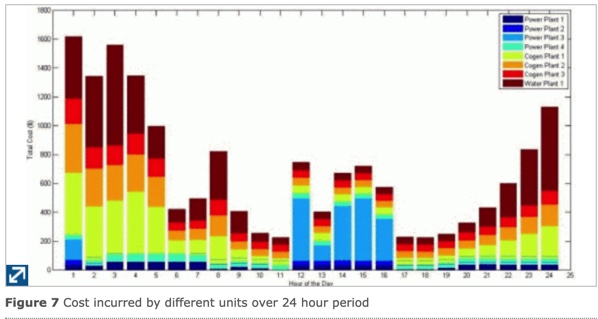
A Santhosh; Amro M Farid; Kamal Youcef-Toumi
The impact of storage facilities on the simultaneous economic dispatch of power and water networks limited by ramping constraints Proceedings Article
In: 2013 IEEE International Conference on Industrial Technology (ICIT), pp. 922-927, IEEE IEEE, 2013, ISBN: 978-1-4673-4569-9.
Abstract | Links | BibTeX | Tags: intelligent systems, Modelling; sizing and control of smart grids, Physical Systems Modeling, Simulation
@inproceedings{MRL_SG_Water_Networks_Storage,
title = {The impact of storage facilities on the simultaneous economic dispatch of power and water networks limited by ramping constraints},
author = {A Santhosh and Amro M Farid and Kamal Youcef-Toumi},
url = {https://ieeexplore.ieee.org/document/6505794},
doi = {10.1109/ICIT.2013.6505794},
isbn = {978-1-4673-4569-9},
year = {2013},
date = {2013-04-23},
booktitle = {2013 IEEE International Conference on Industrial Technology (ICIT)},
pages = {922-927},
publisher = {IEEE},
organization = {IEEE},
abstract = {Recently, the production and consumption of energy and water resources and their potential coupling in what is often called the energy-water nexus has gained attention as an issue of global concern[1, 2]. Ultimately, a significant amount of water is required to produce energy and vice versa [2, 3]; motivating the need for co-optimization based approaches for the two resources. Recently, one such simultaneous co-optimization method has been contributed for the economic dispatch of networks that include water, power and co-production facilities [4]. That study showed that capacity and process constraints often limit total production cost. This paper seeks to add plant ramping behavior as potentially binding constraints and investigate the impact of water and storage facilities as a technology that can help alleviate binding constraints and lead to more levelized production and cost levels. The paper builds upon the optimization program provided in previous work [4] to develop two optimization programs with and without storage facilities and compares their respective results. Storage facilities are shown to reduce total operating costs and lead to more levelized daily production suggesting that they have an important role to play in the optimization of the energy-water nexus.},
keywords = {intelligent systems, Modelling; sizing and control of smart grids, Physical Systems Modeling, Simulation},
pubstate = {published},
tppubtype = {inproceedings}
}
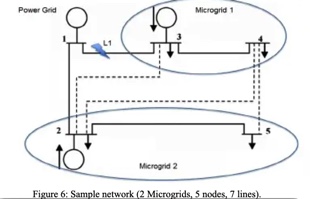
Sergio Rivera; Amro Farid; Kamal Youcef-Toumi
Coordination and Control of Multiple Microgrids Using Multi-Agent Systems Proceedings Article
In: Energypath 2013: Our Global Sustainable Energy Future, 2013, ISBN: 978-1-4673-5669-5.
Abstract | Links | BibTeX | Tags: intelligent systems, Modelling; sizing and control of smart grids, Physical Systems Modeling, Simulation
@inproceedings{MRL_SG_Multi_Microgrid_Coordination,
title = {Coordination and Control of Multiple Microgrids Using Multi-Agent Systems},
author = {Sergio Rivera and Amro Farid and Kamal Youcef-Toumi},
url = {https://www.researchgate.net/publication/265042254_Coordination_and_Control_of_Multiple_Microgrids_Using_Multi-Agent_Systems},
doi = {10.1109/PTC.2013.6652180},
isbn = {978-1-4673-5669-5},
year = {2013},
date = {2013-01-01},
booktitle = {Energypath 2013: Our Global Sustainable Energy Future},
abstract = {As distributed renewable generation sources continue to be integrated into the power grid, the concept of Microgrids has gained traction. Here, the integration challenge is not just in the control of an individual Microgrid but also in their coordination. This short communication presents a novel approach to inter-Microgrid coordination and control based upon Multi-Agent systems. An architecture based upon physical agents is presented and is implemented on a dual platform of JADE (environment for developing agents) and Matlab-Matpower (power system analysis tool). The implementation is demonstrated for a reconfiguration scenario involving the preservation of vital loads. The work presents many opportunities for future developments in the domain of resilient self-healing power grids.},
keywords = {intelligent systems, Modelling; sizing and control of smart grids, Physical Systems Modeling, Simulation},
pubstate = {published},
tppubtype = {inproceedings}
}

Hussein M Abdelhalim; Amro M Farid; Ambrose A Adegbege; Kamal Youcef-Toumi
Transient Stability of Power Systems with Different Configurations for Wind Power Integration Proceedings Article
In: Innovative Smart Grid Technologies (ISGT), 2013 IEEE PES, 2013.
Abstract | Links | BibTeX | Tags: intelligent systems, Modelling; sizing and control of smart grids, Physical Systems Modeling, Simulation
@inproceedings{MRL_SG_Wind_Integration_Stability,
title = {Transient Stability of Power Systems with Different Configurations for Wind Power Integration},
author = {Hussein M Abdelhalim and Amro M Farid and Ambrose A Adegbege and Kamal Youcef-Toumi},
url = {https://ieeexplore.ieee.org/stamp/stamp.jsp?tp=&arnumber=6497903&isnumber=6497783&tag=1},
doi = {10.1109/ISGT.2013.6497903},
year = {2013},
date = {2013-01-01},
booktitle = {Innovative Smart Grid Technologies (ISGT), 2013 IEEE PES},
abstract = {Previous transient stability studies investigating the effects of wind power integration into a conventional power system assume the insertion point of the wind-generating units to be at the same bus and interconnection voltage as the synchronous generators they are substituting or complementing. While these assumptions offer some insights into the effects of the wind on the existing system, important points about the physical distance and interconnection voltage of wind farms with respect to the conventional power system are neglected. This paper analyzes the effects of integrating doubly-fed induction wind turbine generators through different transmission line configurations and at different buses. The IEEE 14-bus test system is used in order to compare results with previous works. Results show that connecting wind generators through transmission lines and to different buses introducesdelays in the speed dynamic responses of existing synchronous generators. These delays in turn affect the bus voltage oscillations. Results also show that there is no significant effect on the base cases when using different interconnection voltages to connect the wind. The results of this study can be used by power system operators when deciding how to connect wind farms to an existing power network when optimizing for stability response to a large fault. Overall, wind farms should be connected through additional transmission lines to buses near where synchronous generators are located and further away from loads and higher risk fault areas.},
keywords = {intelligent systems, Modelling; sizing and control of smart grids, Physical Systems Modeling, Simulation},
pubstate = {published},
tppubtype = {inproceedings}
}
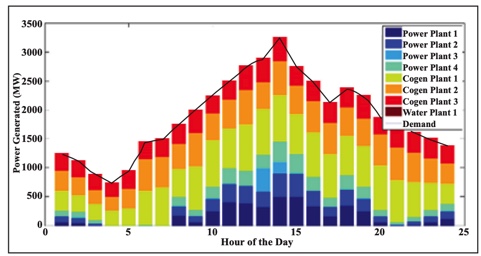
William N Lubega; Apoorva Santhosh; Amro M Farid; Kamal Youcef-Toumi
Opportunities for Integrated Energy and Water Management in the GCC Proceedings Article
In: EU-GCC Renewable Energy Policy Experts' Workshop, Gulf Research Center, 2013, ISBN: 978-1-4799-3685-4.
Abstract | Links | BibTeX | Tags: intelligent systems, Modeling; sizing and control of smart grids
@inproceedings{MRL_SG_Integrated_Energy_Management,
title = {Opportunities for Integrated Energy and Water Management in the GCC},
author = {William N Lubega and Apoorva Santhosh and Amro M Farid and Kamal Youcef-Toumi},
url = {http://amfarid.scripts.mit.edu/resources/Conferences/EWN-C36.pdf},
isbn = {978-1-4799-3685-4},
year = {2013},
date = {2013-01-01},
booktitle = {EU-GCC Renewable Energy Policy Experts' Workshop},
publisher = {Gulf Research Center},
abstract = {Electric power is required to produce, treat, distribute, and recycle water while water is required to generate and consume electricity. The goal of this position paper is to identify and motivate opportunities for the operations management and planning of the energy-water nexus. It proceeds in three parts. First, an exposition of the energy-water nexus especially as it applies to the GCC is given. This discussion focuses on the electric power system, the potable water distribution system, and the wastewater distribution system. Then, the paper shifts to opportunities in operations management where recent work in the Laboratory for Intelligent Integrated Networks of Engineering Systems has produced a number of optimization programs to support the deregulated operation of integrated energy-water markets. To highlight the viability of this idea, an energy-water nexus supply side economic dispatch is presented. Finally, the position paper shifts to discuss planning opportunities for the energy-water nexus for the sustainable development of water and energy resources. These include new methods that encourage renewable energy penetration and balance the portfolio of desalination technologies. It also includes integrated strategies for the design of water infrastructure to minimize embedded energy while reusing water of various qualities. The paper concludes with a description of opportunities for EUGCC collaboration to support the purpose of the workshop.},
keywords = {intelligent systems, Modeling; sizing and control of smart grids},
pubstate = {published},
tppubtype = {inproceedings}
}
2012
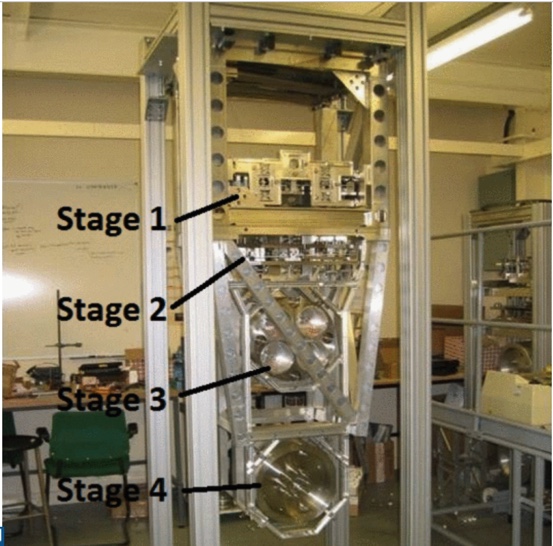
Brett Shapiro; Nergis Mavalvala; Kamal Youcef-Toumi
Modal damping of a quadruple pendulum for advanced gravitational wave detectors Proceedings Article
In: 2012 American Control Conference (ACC), pp. 1017-1022, ACC ACC, 2012, ISBN: 978-1-4577-1096-4.
Abstract | Links | BibTeX | Tags: Control Theory, Data-driven learning for intelligent machine maintanence, Experimentation, Fabrication, intelligent systems, Physical System Modeling, Simulation
@inproceedings{MRL_DDL_Gravity_Wave_Detectors,
title = {Modal damping of a quadruple pendulum for advanced gravitational wave detectors},
author = {Brett Shapiro and Nergis Mavalvala and Kamal Youcef-Toumi},
url = {https://ieeexplore.ieee.org/document/6315185},
doi = {10.1109/ACC.2012.6315185},
isbn = {978-1-4577-1096-4},
year = {2012},
date = {2012-10-02},
booktitle = {2012 American Control Conference (ACC)},
pages = {1017-1022},
publisher = {ACC},
organization = {ACC},
abstract = {The Laser Interferometer Gravitational-Wave Observatory (LIGO) has begun a major set of upgrades to reach a sensitivity better than 10-19 m/√(Hz) in the 10Hz to 10 kHz frequency band. This advance is expected to bring gravitational wave observations of relativistic astrophysical events such as black hole mergers and supernovae into the realm of regular astronomy. These upgrades require complex vibration isolation systems to better decouple the test masses from ground disturbances. These high performance systems require correspondingly more complex and aggressive active control loops to meet the increased demand in instrument sensitivity. This paper applies a modal damping technique with state estimation to optimize the trade-off between disturbance rejection and sensor noise amplification. The state estimator design applies a customized cost function around the Linear Quadratic Regulator (LQR) algorithm.},
keywords = {Control Theory, Data-driven learning for intelligent machine maintanence, Experimentation, Fabrication, intelligent systems, Physical System Modeling, Simulation},
pubstate = {published},
tppubtype = {inproceedings}
}
2011
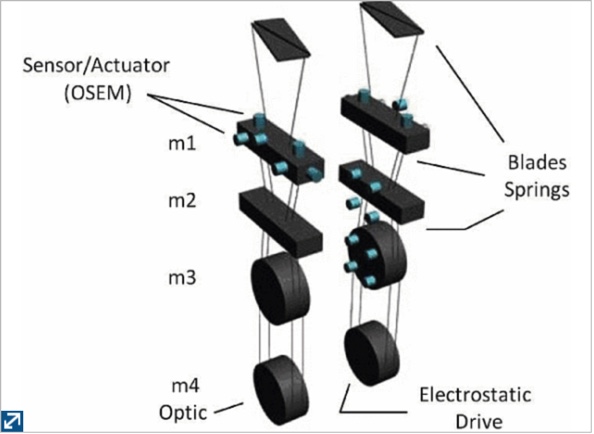
Brett Shapiro; Nergis Mavalvala; Kamal Youcef-Toumi
Actuator sizing of a quadruple pendulum for advanced gravitational wave detectors Proceedings Article
In: Proceedings of the 2011 American Control Conference, pp. 1358-1363, ACC ACC, 2011, ISBN: 978-1-4577-0081-1.
Abstract | Links | BibTeX | Tags: Control Theory, Data-driven learning for intelligent machine maintanence, Experimentation, Fabrication, intelligent systems, Physical System Modeling, Simulation
@inproceedings{MRL_DDL_Actuator_Sizing_Pendulum,
title = {Actuator sizing of a quadruple pendulum for advanced gravitational wave detectors},
author = {Brett Shapiro and Nergis Mavalvala and Kamal Youcef-Toumi},
url = {https://ieeexplore.ieee.org/document/5991170},
doi = {10.1109/ACC.2011.5991170},
isbn = {978-1-4577-0081-1},
year = {2011},
date = {2011-08-18},
booktitle = {Proceedings of the 2011 American Control Conference},
pages = {1358-1363},
publisher = {ACC},
organization = {ACC},
abstract = {The Laser Interferometer Gravitational-Wave Observatory (LIGO) has begun a major set of upgrades to reach a sensitivity better than 10-19 m/√(Hz) in the 10 Hz to 10 kHz frequency band. This advance is expected to bring gravitational wave observations of relativistic astrophysical events such as black hole mergers and supernovae into the realm of regular astronomy. These upgrades require complex vibration isolation systems to better decouple the test masses from ground disturbances. These high performance systems require correspondingly more complex and aggressive active control loops to meet the increased demand in instrument sensitivity. Appropriately sized actuators are essential to achieving the necessary control performance while limiting the cost, noise, and complexity associated with larger actuators. This paper applies the plant's pseudoinverse transfer function to analyze the least squares dynamic range required by the actuators to reject the stochastic disturbances exciting the Advanced LIGO quadruple pendulum isolation systems.},
keywords = {Control Theory, Data-driven learning for intelligent machine maintanence, Experimentation, Fabrication, intelligent systems, Physical System Modeling, Simulation},
pubstate = {published},
tppubtype = {inproceedings}
}
1979

Aramazd Muzhikyan; Amro M Farid; Kamal Youcef-Toumi
An a priori analytical method for the determination of operating reserve requirements Journal Article
In: International Journal of Electrical Power & Energy Systems, vol. 86, pp. 1-17, 1979, ISSN: 0142-0615.
Abstract | Links | BibTeX | Tags: Algorithms, Computational Intelligence, intelligent systems, Physical System Modeling, Simulation, Uncertainty estimation and calibration for modeling
@article{MRL_AFM_Priori_Operating_Requirements,
title = {An a priori analytical method for the determination of operating reserve requirements},
author = {Aramazd Muzhikyan and Amro M Farid and Kamal Youcef-Toumi},
url = {https://www.sciencedirect.com/science/article/pii/S0142061515300089},
doi = {https://doi.org/10.1016/j.ijepes.2016.09.005},
issn = {0142-0615},
year = {1979},
date = {1979-04-01},
journal = {International Journal of Electrical Power & Energy Systems},
volume = {86},
pages = {1-17},
publisher = {ScienceDirect},
abstract = {Power balance is one of the key requirements for reliable power system operation. However, factors, such as net load variability and forecast errors, impose practical limitations on matching the scheduled generation and the real-time demand. Normally, potential power imbalances are mitigated by scheduling additional generation capacity called operating reserves. However, reserves are a costly commodity and their requirements should be accurately assessed to avoid unnecessary expense. Currently, the reserve requirements are determined using a posteriori methods based upon operator’s experience and established assumptions. While these assumptions are made out of a level of engineering practicality, they may not be formally true given the numerical evidence. This paper presents a formal mathematical framework for the a priori determination of three types of operating reserve requirements, namely load following, ramping and regulation. Validation of the methodology is performed by a set of extensive simulations that model the power system operations for different scenarios. This methodology is used to study the sensitivity of each type of reserve requirement to the net load and power system parameters.},
keywords = {Algorithms, Computational Intelligence, intelligent systems, Physical System Modeling, Simulation, Uncertainty estimation and calibration for modeling},
pubstate = {published},
tppubtype = {article}
}
